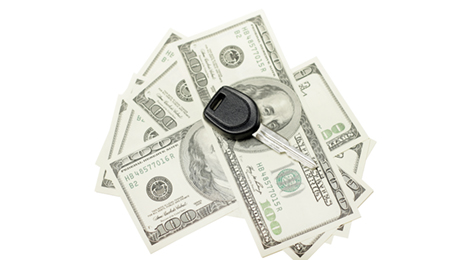Fitch cautious about summertime subprime ABS movement

Fitch Ratings shared its latest update on the topic becoming more of a pressing issue for finance company executives this year — the performance of subprime auto loan ABS.
While analysts noticed overall losses and delinquencies improved again in May, Fitch suspects that “the summer months do not figure to be as kind for the sector.”
According to the latest monthly index results released on Tuesday, 60-day delinquencies in the subprime sector improved nearly 2 percent month-over-month to 3.64 percent, though they are still 9 percent worse versus May of last year. Fitch indicated subprime annualized net losses posted “solid” performance in May, dropping to 6.52 percent. The May move marked a 12-percent decline compared to April. However, last month’s reading came in 52 percent above the level recorded a year ago.
“The April collection/May reporting period has produced the strongest performance metrics of the year, with consumers reaping the benefits of tax refunds and using them to pay down debts,” Fitch said.
“Looking ahead, performance metrics are likely to slow and losses to rise during the summer season,” the firm continued.
With tax season completed, Fitch is expecting subprime annualized net losses to climb within the range of 6.50 percent to 8 percent during the next four months.
“Current economic conditions appear mixed but healthy overall,” Fitch analysts said. “Job growth slowed materially in May — a bad sign which may indicate slower economic activity in coming months.
“However, the equities market continued to tick up with stock prices elevated, in part driven by strong fiscal support along with low interest rates and gas prices,” they went on to say.
In the prime space, Fitch reported that 60-day delinquencies slowed to 0.30 percent in May. That figure represented a 12-percent decrease month-over-month as the reading declined to the lowest level since May of last year.
Analysts added that annualized net losses in prime dipped by 12 percent month-over-month, settling at 0.40 percent. Prime delinquencies came in flat year-over-year, while annualized net losses jumped 32 perent higher.
“Prime and subprime auto loan ABS metrics displayed better results in May as delinquencies and losses declined,” analysts reiterated.
“Despite improvements over the past few months, Fitch believes auto ABS performance will slowly deteriorate again during the summer,” they continued. “Pressure on used-vehicle values will increase and drive loss severity, while weaker credit quality in recent 2013-2015 vintages will move loss frequency higher.”
Fitch recapped that the seasonally adjusted annual rate (SAAR) of new-vehicle sales was 17.4 million units in May, down from the same period in 2015.
“Used-vehicle demand remains fairly healthy but will continue to be pressured in 2016 from rising used-vehicle supply,” Fitch said.
“Gas prices have crept up over the past six weeks, which will support compact car vehicle values which may have hit a floor in May,” the firm continued. “Nevertheless, these models remain the weakest vehicle segment as current oil prices continue to drive consumers toward larger SUV and truck models.”
Overall, Fitch asserted that the used-vehicle market was fairly active in May with prices stable. The Manheim Used Vehicle Value Index was higher, albeit by a small margin, rising to 124.5 from 122.8 in April. The index was down by just over 1 percent from a year earlier.
Fitch upgraded 38 outstanding auto ABS tranches through early June, in line with the first six months of 2015.
“Despite slower asset performance this year for both the prime and subprime sectors, Fitch has a stable asset performance outlook for the sector in 2016, while the ratings\outlook is positive,” analysts said.
Fitch’s U.S. auto ABS indices comprise $103 billion of outstanding collateral, of which 63 percent is prime and 37 percent subprime. “Importantly, the total auto lending market hit a record level of $1.1 trillion in May,” the firm said.
Fitch’s prime auto ABS index only makes up approximately 6.2 percent of the total auto loans outstanding in the U.S., and the subprime index only 3.6 percent in total.


